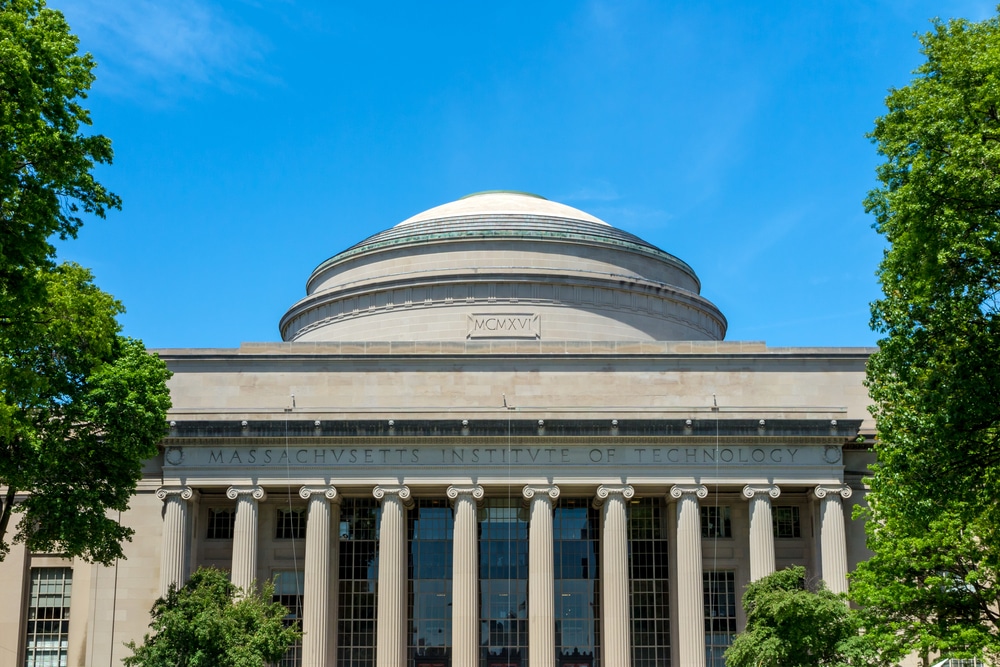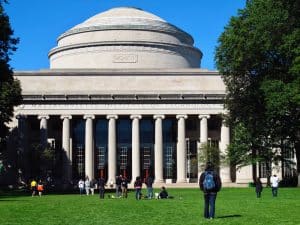Exploring MIT’s Graduate School: An In-Depth Look
The Massachusetts Institute of Technology (MIT) is a name that instantly evokes a sense of academic excellence, ground-breaking research, and unparalleled innovation. Recognized globally as one of the world’s leading research universities, MIT offers an inspiring graduate school experience that melds rigorous studies with a thrilling, vibrant community. This article offers an in-depth view of what being part of MIT’s academic journey is like.
Understanding the Prestige of MIT
The prestige of MIT is underpinned by its consistently outstanding performance in global university rankings. Frequently rated among the top institutions worldwide for engineering and technology, MIT’s influence seeps into computer science, economics, linguistics, management, and much more.
The Legacy of MIT
Established in 1861, MIT’s legacy lies in its enduring commitment to fostering a fertile environment for discovery, knowledge creation, and problem-solving. Its ethos of ‘Mens et Manus’ or ‘Mind and Hand’ underscores an academic philosophy that integrates rigorous intellectual pursuits with practical applications.
This longstanding tradition of applied learning distinguishes its graduates as innovators and thought leaders with the skills and knowledge to drive societal and technological advancements.
MIT’s legacy is not only defined by its academic achievements but also by its contributions to society. MIT has been at the forefront of groundbreaking research and technological advancements. From the development of radar during World War II to the invention of the World Wide Web, MIT has consistently pushed the boundaries of innovation.
Furthermore, MIT’s commitment to interdisciplinary collaboration has led to the establishment of numerous research centers and institutes. These centers bring together experts from various fields to tackle complex global challenges, such as climate change, poverty alleviation, and healthcare innovation.
Notable Alumni and their Contributions
MIT’s reputation is further cemented by its exceptional alumni identified as leaders in various disciplines. These include Kofi Annan, a former UN Secretary-General; Buzz Aldrin, an astronaut and one of the first two humans to land on the moon; and Andrew Viterbi, the inventor of the Viterbi algorithm.
These notable alumni represent just a fraction of the countless individuals who graduated from MIT and made significant contributions to their respective fields. MIT alumni, from Nobel laureates to Pulitzer Prize winners, continue to shape the world through their groundbreaking research, innovative startups, and influential leadership.
Perhaps no other plan illustrates the scope of MIT graduates’ impact than the fact that their individual and combined contributions to the global economy would represent the tenth-largest economy in the world.
MIT alumni have founded and led some of the most successful companies in the world, including Intel, Dropbox, and Qualcomm. Their entrepreneurial spirit and ability to translate cutting-edge research into practical applications have revolutionized industries and transformed how we live and work.
Moreover, MIT alumni are not only focused on technological advancements but also on addressing pressing global challenges. From developing sustainable energy solutions to designing innovative healthcare technologies, MIT graduates are at the forefront of creating a better future for all.
In conclusion, the prestige of MIT is not solely based on its rankings or academic excellence. It is a result of a rich legacy, a commitment to applied learning, and the remarkable achievements of its alumni. MIT’s influence extends far beyond its campus, shaping the world through innovation, research, and leadership.
The Graduate School Experience at MIT
Undertaking graduate studies at MIT promises a dynamic, transformative experience that extends beyond the confines of classrooms and labs.
When it comes to the graduate school experience at MIT, academic rigor is at the heart of it all. MIT graduate programs are designed to push the boundaries of knowledge and challenge students to think independently and creatively. The faculty members are world-renowned experts, providing students with unparalleled guidance and mentorship. The rigorous coursework and demanding research projects ensure that students are constantly pushing themselves to new heights of intellectual achievement.
However, MIT’s graduate school experience is far from being one-dimensional. It goes beyond the academic realm and offers students a plethora of opportunities to explore and grow. One of the key aspects of this experience is the chance to participate in cutting-edge research projects. MIT is a hub of innovation, and graduate students have the privilege of working alongside brilliant minds on groundbreaking research that has the potential to shape the future.
In addition to research opportunities, MIT also encourages collaboration with industry partners. This allows students to gain real-world experience and apply their knowledge in practical settings. The connections forged through these collaborations often lead to exciting career prospects and open doors to a world of possibilities.
Furthermore, MIT recognizes the importance of engaging with diverse cultures and demographics. The graduate school experience at MIT is enriched by the presence of students from over 100 countries. This melting pot of cultures and ideas fosters an environment that celebrates diversity and encourages cross-cultural collaboration. Students have the opportunity to learn from their peers, broaden their perspectives, and develop a global mindset that is essential in today’s interconnected world.
While academics are undoubtedly a significant part of the graduate school experience, MIT also places great importance on campus life and culture. The vibrant and inclusive community at MIT offers a multitude of opportunities for students to engage in extracurricular activities and explore their interests outside of the classroom.
The campus is buzzing with student clubs and organizations, catering to a wide range of interests and passions. Whether it’s joining a robotics club, participating in a debating society, or immersing oneself in a cultural organization, there is something for everyone. These clubs provide a platform for students to pursue their hobbies and foster community and camaraderie.
Sports programs are also an integral part of campus life at MIT. From intramural sports leagues to varsity teams, students have the chance to compete, stay active, and be part of a team. Whether playing a game of basketball with friends or representing MIT in a national championship, the sports programs at MIT offer a well-rounded experience for athletes of all levels.
For those with a passion for the arts, MIT has a vibrant artistic community. The campus is home to numerous galleries, theaters, and performance spaces, showcasing the talents of students in various artistic disciplines. Whether attending a theater production, visiting an art exhibition, or participating in a music ensemble, students have ample opportunities to explore their creative side and engage with the arts.
Engaging with the community is another aspect of campus life at MIT. The university encourages students to give back and make a positive impact through various community service initiatives. Whether volunteering at a local shelter, organizing a fundraising event, or mentoring high school students, students at MIT are actively involved in making a difference in the lives of others.
Overall, the graduate school experience at MIT is a transformative journey beyond the classroom. It offers academic rigor, research opportunities, cultural diversity, and a vibrant campus life that fosters personal and intellectual growth. Graduates of MIT leave with not only a world-class education but also a wealth of experiences and connections that will shape their future endeavors.
Programs and Departments in Focus
MIT offers a wide spectrum of graduate programs across various disciplines. Here, we delve into the vast academic landscape that is MIT.
When it comes to graduate programs, MIT is a powerhouse. With a rich array of disciplines to choose from, students have the opportunity to explore their passions and delve deep into their chosen fields. Whether it’s Engineering, Computer Science, Business, Mathematics, Physics, Biology, Chemistry, or any other discipline, MIT has it all.
What sets MIT apart from other universities is the exceptional quality of its graduate programs. These 46 departmental programs continue to top the charts in global university rankings year after year, testifying to MIT’s academic prowess. The faculty members are world-renowned experts in their respective fields, and their dedication to teaching and research is unparalleled.
Research is at the heart of MIT’s graduate programs. Students are encouraged to push the boundaries of human knowledge and make meaningful contributions in their respective fields. The research opportunities available at MIT are vast and varied, allowing students to explore their interests and pursue groundbreaking discoveries.
Interdisciplinary Opportunities
MIT’s commitment to fostering innovation often lies at the intersection of disciplines. As such, MIT promotes interdisciplinary studies, offering myriad opportunities for students to marry concepts and techniques from different fields, fostering novel approaches to complex problem-solving.
At MIT, interdisciplinary initiatives are not just buzzwords but a way of life. The MIT Media Lab, for example, brings together researchers from diverse backgrounds, such as computer science, engineering, art, and design, to explore the intersection of technology and human expression. This collaborative environment encourages students to think outside the box and come up with innovative solutions to real-world problems.
Another example of MIT’s commitment to interdisciplinary studies is the MIT Energy Initiative. With the pressing need for sustainable energy solutions, this initiative brings together experts from various fields, such as engineering, physics, chemistry, and policy, to tackle the complex energy production and consumption challenges. MIT is at the forefront of developing clean and renewable energy technologies through interdisciplinary collaboration.
These interdisciplinary initiatives serve as a testament to MIT’s commitment to go beyond traditional disciplinary boundaries and to pioneer new fields of study. MIT is shaping the future of research and education by encouraging collaboration and innovation.
Admission Process and Requirements
Securing a place in MIT’s graduate school is no small feat. However, understanding the admission process and requirements can ease the journey for prospective students.
When it comes to applying to MIT’s graduate school, there are several essential steps that prospective students must take. The first step is completing an online application, which serves as the initial introduction to the admissions committee. This application requires students to provide their personal information, academic history, and contact details.
Along with the online application, applicants are required to submit their academic transcripts. These transcripts provide a comprehensive overview of the applicant’s educational background, including courses taken, grades received, and any honors or awards earned. The admissions committee reviews these transcripts to assess the applicant’s academic performance and potential.
In addition to academic transcripts, applicants must also submit letters of recommendation. These letters are typically written by professors, employers, or other individuals who can speak to the applicant’s abilities, character, and potential for success in their chosen field. Strong recommendation letters can greatly influence the admissions committee’s decision and provide valuable insights into the applicant’s qualifications.
Another important requirement for admission to MIT’s graduate school is evidence of English language proficiency. This is particularly important for international students whose first language is not English. Applicants are usually required to submit standardized test scores, such as the TOEFL or IELTS, to demonstrate their proficiency in English.
Application Essentials
The application process also entails submitting a statement of intentions outlining academic and career goals and the reasons for choosing MIT. This statement allows applicants to articulate their passion for their field of study and their aspirations for the future. It allows applicants to showcase their unique perspectives and motivations, helping the admissions committee understand why they are a good fit for MIT’s graduate school.
Academic departments may sometimes require additional materials or interviews as part of the application process. These additional requirements vary depending on the specific program of study and are designed to assess the applicant’s suitability for the program. For example, applicants to certain research-intensive programs may be asked to submit a research proposal or portfolio of their previous work.
Tips for a Successful Application
Crafting a successful application involves more than just meeting the basic requirements. It requires applicants to go above and beyond to showcase their unique qualities and demonstrate their potential for success at MIT.
One important aspect of a successful application is showcasing academic excellence. While strong grades and test scores are important, it is equally important to highlight any research projects, internships, or other experiences that demonstrate a deep understanding and passion for the chosen field of study.
Furthermore, the application letter and personal statement give the applicant a voice in the admissions process. It is an opportunity to go beyond the academic transcripts and test scores and allow the admissions committee to get a sense of the person behind the application. Applicants should use this opportunity to convey their motivations, aspirations, and unique perspectives, emphasizing how studying at MIT aligns with their career goals.
Providing strong recommendation letters can also greatly influence the admissions committee’s decision. Choosing recommenders who can speak to the applicant’s academic or professional ability and provide specific examples of their achievements and potential is important. These letters serve as a testament to the applicant’s qualifications and can provide valuable insights into their character and work ethic.
Ultimately, the admission process for MIT’s graduate school is rigorous and competitive. However, by understanding the requirements and tips for a successful application, prospective students can confidently navigate this process and increase their chances of securing a place at one of the world’s most prestigious institutions.
Financial Aspects of Studying at MIT Graduate School
The prospect of studying at MIT is undoubtedly exciting, but it also raises important considerations about the financial aspects involved.
Tuition and Living Expenses
As a prestigious institution, the cost of attending MIT is substantial. Tuition, fees, and living expenses form the bulk of the cost. However, the institution strives to ensure that financial constraints don’t prevent deserving students from attending.
Scholarships and Financial Aid
MIT provides a number of scholarships, fellowships, teaching and research assistantships to help graduate students fund their education. The institution is committed to ensuring that cost does not deter talented students from pursuing their studies at MIT.
MIT’s financial aid program is need-based, where aid is given based on the financial need of the students, furthering their mission of providing opportunity and access to all admitted students regardless of their financial circumstances.
In conclusion, MIT’s graduate school offers an unmatched blend of academic rigor, groundbreaking research, community engagement, and career advancement opportunities. With a robust support system and a culture that encourages curiosity, MIT equips students to redefine the boundaries of knowledge and innovation.
If you need help putting the finishing touches on your college applications, at AdmissionSight, we have over 10 years of experience guiding students through the competitive admissions process.
AdmissionSight can help you put your best foot forward when applying to college this fall. Contact us today for more information on our services.








































